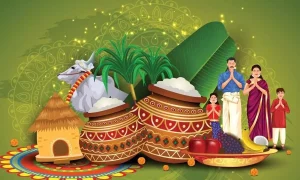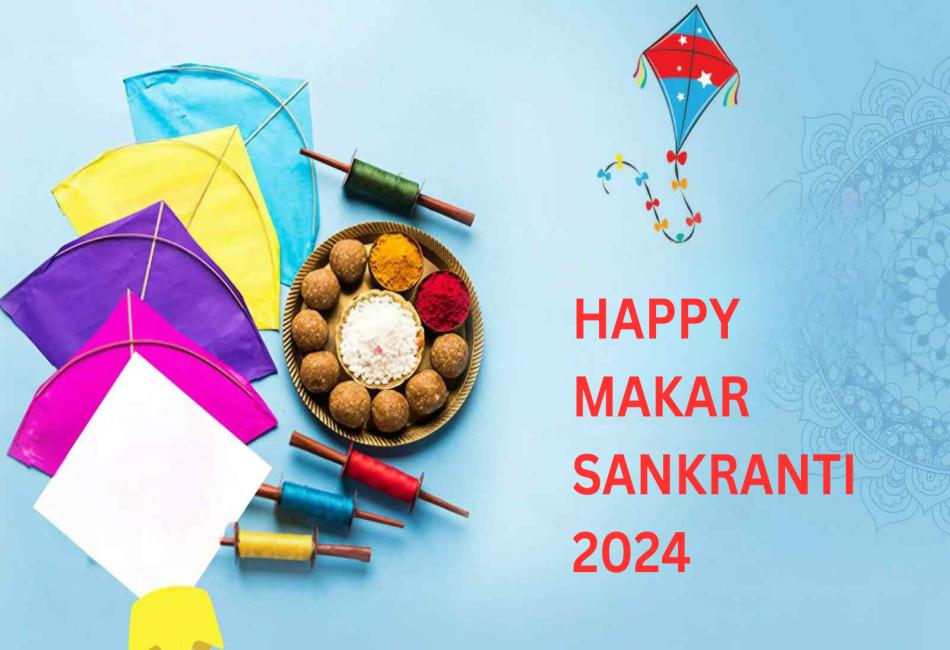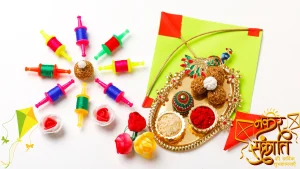Makar Sankranti is one of the most widely celebrated festivals in India, marking the end of the winter solstice and the beginning of longer days as the sun starts its northward journey—Uttarayan. In 2024, Makar Sankranti will be celebrated on Monday, January 15, and as always, it will be observed with enthusiasm across the country.
The word “Makar” refers to the zodiac sign Capricorn, and “Sankranti” means transition. Thus, Makar Sankranti signifies the sun’s transition from Sagittarius (Dhanu Rashi) to Capricorn (Makar Rashi). This astronomical event is of great spiritual significance in Hindu culture and is associated with divinity, prosperity, and the change of seasons.
Contents
Date and Time of Makar Sankranti 2024
In 2024, Makar Sankranti falls on January 15 (Monday) due to the solar calendar’s alignment. While the festival is usually observed on January 14, it occasionally falls on January 15 depending on the exact solar movement.
-
Sankranti Moment: January 15, 2024, at 02:45 AM (IST)
-
Punya Kaal (auspicious time): January 15, from 07:15 AM to 05:46 PM
-
Mahapunya Kaal: 07:15 AM to 09:00 AM
Devotees take holy dips during this period in rivers like the Ganges, Yamuna, Godavari, and Krishna.
Cultural and Religious Significance
Makar Sankranti is deeply rooted in Hindu traditions. It is believed that on this day, the sun god Surya visits the house of his son, Shani (Saturn), symbolizing harmony in relationships. It also marks the end of the inauspicious phase of Dakshinayan and the beginning of Uttarayan, a period considered auspicious for spiritual practices and new beginnings.
Many also believe that taking a holy dip in sacred rivers during Makar Sankranti purifies the soul and washes away past sins. It is also associated with the epic Mahabharata—Bhishma Pitamah chose to leave his mortal body on this day, as dying during Uttarayan is considered to bring moksha (liberation).
Harvest Festival Across Regions
Though called Makar Sankranti in most parts of India, the festival has different names and customs depending on the region:
1. Pongal (Tamil Nadu)
In Tamil Nadu, it is celebrated as Pongal, a four-day-long harvest festival. The main day, Thai Pongal, is dedicated to giving thanks to the Sun God. People cook a dish called Pongal using freshly harvested rice and milk, letting it boil over as a symbol of prosperity.
2. Lohri (Punjab and Haryana)
Lohri is celebrated a day before Makar Sankranti. It marks the harvest of rabi crops, especially sugarcane. People light bonfires, sing folk songs, and dance to bhangra and gidda. Peanuts, popcorn, and rewari are thrown into the fire as offerings.
3. Uttarayan (Gujarat)
In Gujarat, the day is famous for kite flying. The sky becomes a colorful spectacle as families gather on terraces to fly kites and shout “Kai Po Che!” as they cut each other’s strings. Special sweets like tilgul and chikki are prepared.
4. Magh Bihu (Assam)
In Assam, it is known as Magh Bihu or Bhogali Bihu. It celebrates the end of the harvesting season. Traditional feasts are held, and people burn meji (large bonfires) early in the morning after a night of celebration.
5. Khichdi (Uttar Pradesh and Bihar)
In Uttar Pradesh and Bihar, people celebrate the festival by donating khichdi (a rice and lentil dish), til (sesame), and jaggery to the needy. Many also bathe in the Ganga and offer prayers.
6. Poush Sankranti (West Bengal)
In West Bengal, the festival is called Poush Sankranti, and special sweets made from sesame seeds, jaggery, and rice flour, like pithe, patishapta, and tiler naru, are prepared. Pilgrims gather at Gangasagar for a holy dip where the Ganga meets the Bay of Bengal.
Rituals and Traditions
 1. Holy Bath (Snan)
1. Holy Bath (Snan)
Taking a dip in sacred rivers is one of the most important rituals. It is believed to cleanse one’s sins and bring blessings.
2. Surya Puja
Devotees offer water, flowers, and prayers to the Sun God during sunrise, thanking him for sustaining life on Earth.
3. Charity (Daan-Punya)
Giving away food, clothes, and essentials to the poor is considered meritorious. Til, jaggery, and blankets are the most commonly donated items.
4. Flying Kites
This tradition symbolizes rising above negativity. It is especially popular in Gujarat, Maharashtra, and parts of Rajasthan.
5. Traditional Foods
Special food items prepared on this day include:
-
Tilgul (sesame and jaggery sweets)
-
Khichdi (rice and lentil dish)
-
Chikki (brittle made from jaggery and nuts)
-
Pithe and Payesh in Bengal
-
Pongal in Tamil Nadu
These foods, often made from seasonal ingredients like sesame, jaggery, rice, and moong dal, help keep the body warm in winter and are symbolic of unity and joy.
Spiritual and Scientific Importance
Spiritually, Makar Sankranti marks a shift in energy. It is a favorable time for sadhana (spiritual practice), meditation, and self-discipline.
Scientifically, this day denotes the start of longer days and shorter nights, bringing more sunlight and energy. This transition helps in better absorption of Vitamin D from the sun and is traditionally considered the beginning of more productive agricultural and social cycles.
Makar Sankranti 2024 Wishes and Quotes
Here are a few warm wishes to share with your loved ones this festive season:
-
“Wishing you health, wealth, and happiness on this Makar Sankranti!”
-
“As the sun starts its journey northward, may your life be filled with positivity and light.”
-
“Let your kite of happiness soar high this Sankranti!”
-
“May the sweetness of jaggery and the crunch of til bring happiness in your life.”
Final Thoughts
Makar Sankranti 2024 is more than just a festival—it’s a symbol of change, gratitude, and hope. Whether you’re flying kites in Ahmedabad, cooking Pongal in Tamil Nadu, or taking a dip in the holy Ganges, the essence remains the same: celebrating the bounty of nature and the warmth of community.
As we step into this auspicious period, may Makar Sankranti bring new energy, harmony, and prosperity into everyone’s lives.
Let me know if you’d like this content turned into a blog post, social media captions, or translated into Hindi or Bengali!

